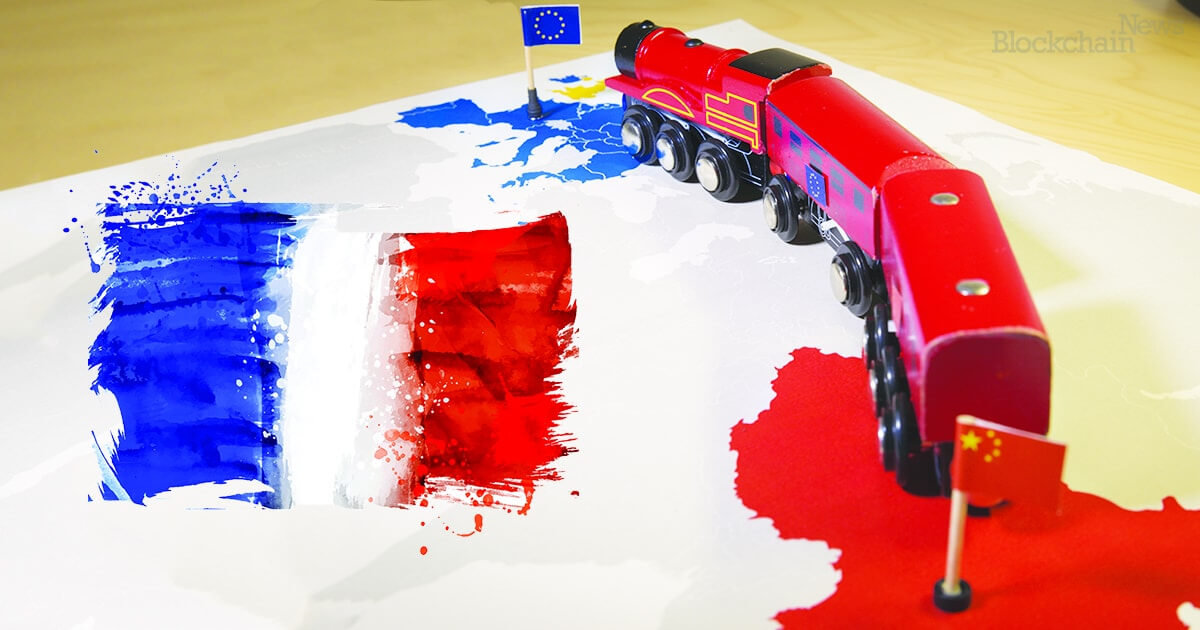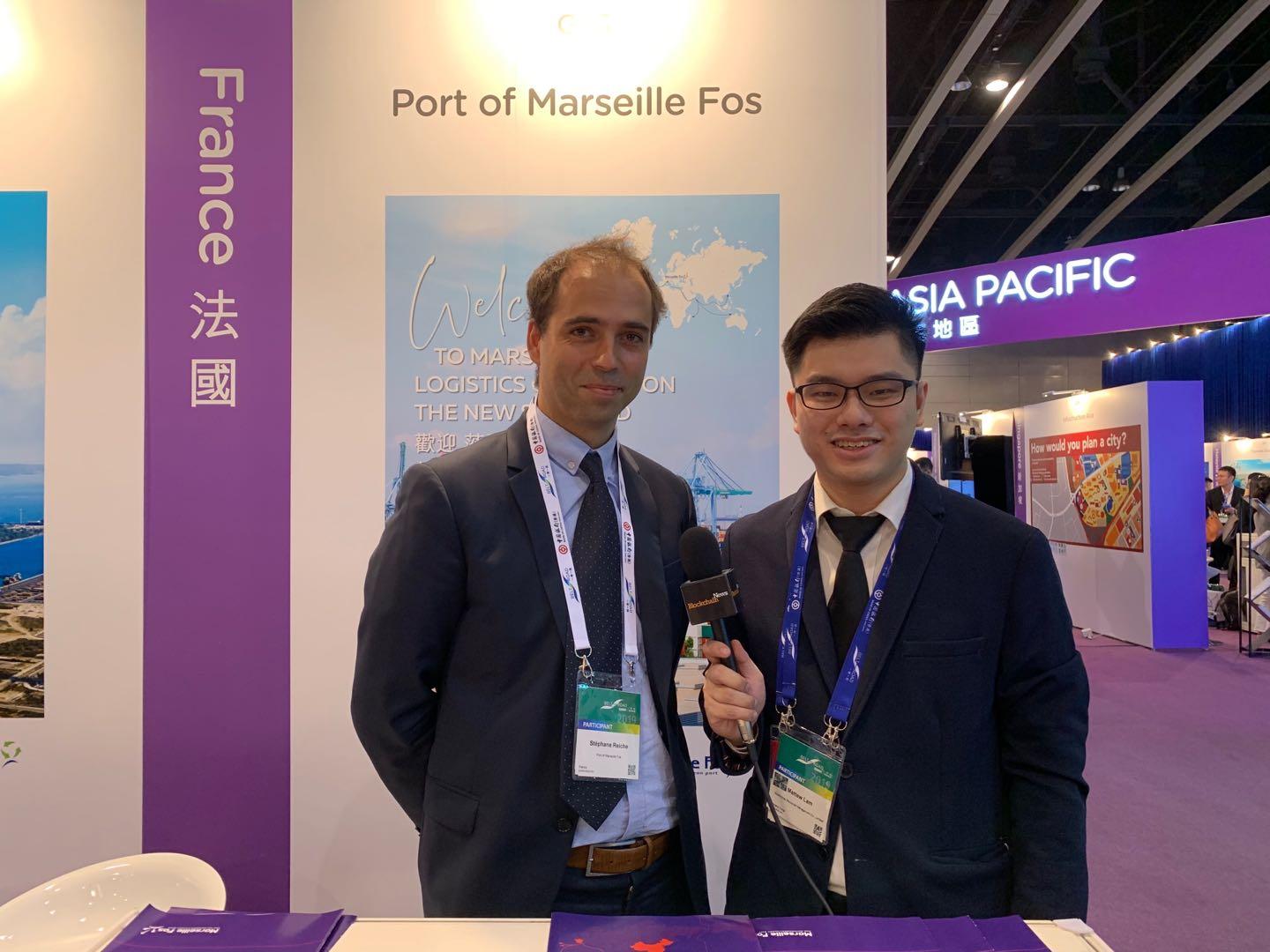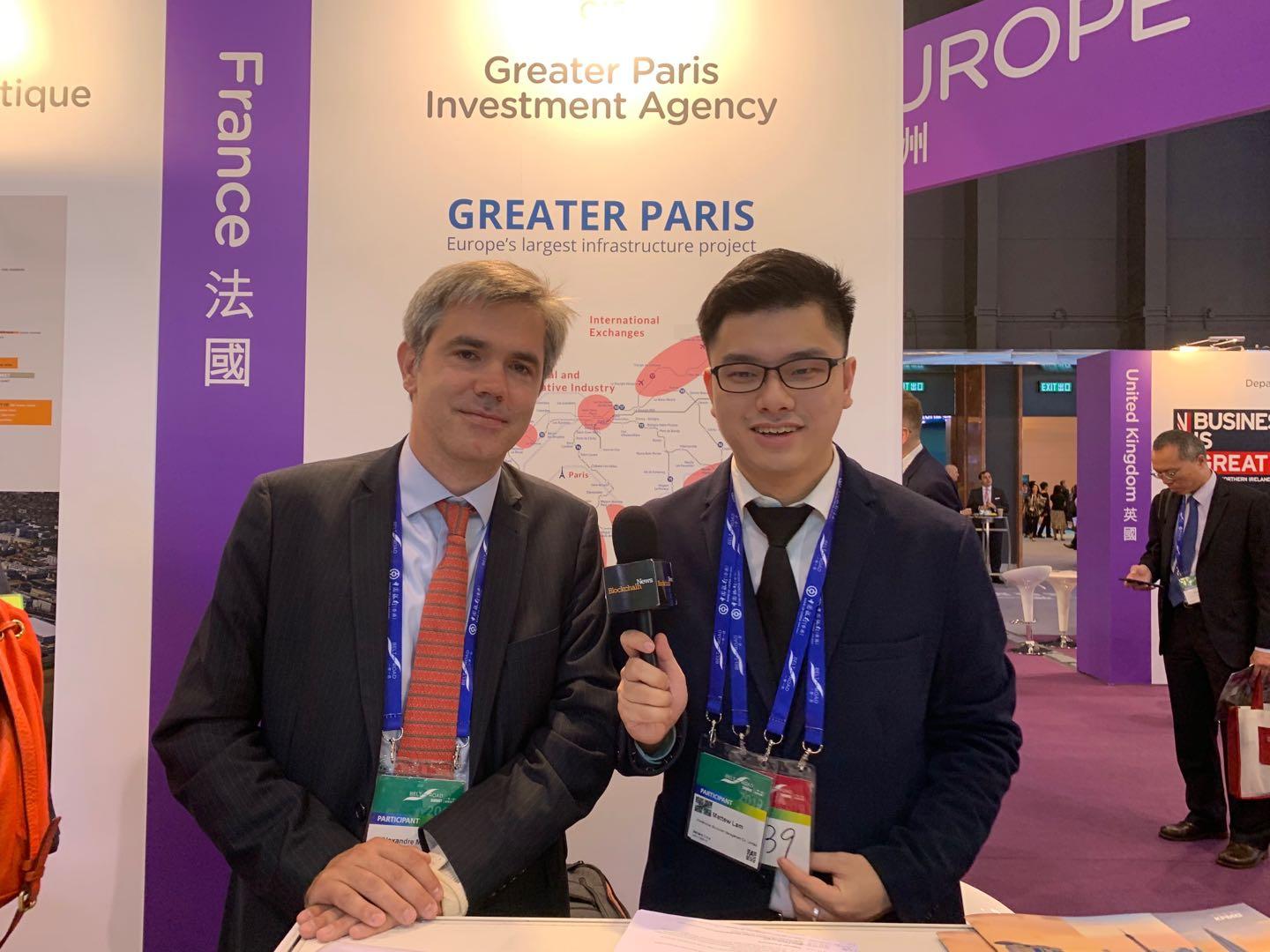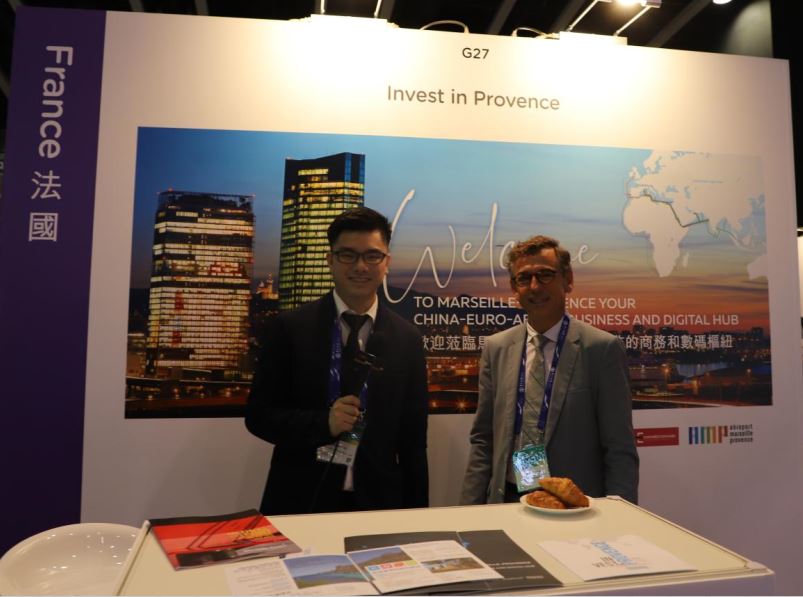FinTech in Belt and Road - Transforming French Freight Logistics with Blockchain
Lucas Cacioli Sep 24, 2019 09:00
The Belt and Road Initiative (BRI) seeks to improve trade connectivity by upgrading transport infrastructure across much of Eurasia. The undertaking spans a massive geographic area covering as many as 63 countries, accounting for sixty percent of the world’s population and thirty percent of global GDP.

The Fourth Belt and Road Summit was held over two days in September at the Hong Kong Convention and Exhibition Centre (HKCEC). The Summit was organized in a joint effort by the Hong Kong Government, the Hong Kong Trade and Development Council (HKTDC). The event was attended by top government officials and business leaders from Hong Kong, China and countries along the Belt and Road.
The Belt and Road Initiative (BRI) seeks to improve trade connectivity by upgrading transport infrastructure across much of Eurasia. The undertaking spans a massive geographic area covering as many as 63 countries, accounting for sixty percent of the world’s population and thirty percent of global GDP.
Blockchain.News took the opportunity to speak with the attending representatives from Europe, Asia and the Middle East to learn more about their countries’ latest developments related to the Belt and Road Initiative.
Europe
The Belt and Road project centers around two main routes over land and sea. On land, the focus is on transport and energy infrastructure for the Silk Road Economic Belt (the Belt). By sea, investments in new ports serve as pillars for promoting trade along the Maritime Silk Road (the Road). Both will impact Europe massively. The land route ends up in Europe and the sea route is currently the busiest trade corridor between Europe and China.
The continued efforts to harness the potential and enhance the efficiency of these land and sea routes, has been met with significant historical challenges. In cargo and freight there has been no common platform for operations and the responsibility is most often shared among a multitude of operators leading to complications of transparency, online tracking, predictability, accessibility and booking within trade routes. In France, decentralized transport and logistics platforms based on Blockchain are seen as the innovative solution to historical issues.

Invest in Provence and the Port of Marseilles
The Invest in Provence Agency is the official economic board for the Provence region of southern France. Philippe Stefanini, CEO of Invest in Provence explained, “The Agency supports international companies, and especially Chinese companies. Our services are free and confidential and we can support these companies by connecting them with the right partners and location for their operations.”
The Port of Marseille is fast becoming the central digital port connecting Europe to Africa, China and the Middle East. Stefanini said, “The Port of Marseille represents one of the main business expansion opportunities for the Belt and Road Initiative. We have 14 digital submarine cables and we will soon welcome the Peace cable from China, making us the main digital port for Chinese submarine cables. As a leading digital connection hub, we are able to support FinTech organizations who wish to deliver their services to customers in Europe with direct cable links from China and Asia.” He continued, “In terms of logistics, transporting goods from China to Europe is four days shorter than any alternative route, thus offering the quickest way for Chinese companies to enter the European Market.”
Marseille and its port are looking to develop cooperation on industrial and logistic projects with China fostering reciprocity and focused on high social and environmental standards. Stefanini highlighted, “The China Merchants have invested in the Port of Marseilles Containers Platform. Our largest investments so far have come from China Mobile, China Unicom and China Telecom who have recently established their main infrastructure for Southern Europe in Marseille’s digital port.”
Philippe Stefanini, on the opportunities to Invest in Provence due to recent macroeconomic uncertainties
While the China-US trade war may be a macro-economic concern for most, Stefanini believes that, “Mainland Europe will continue to be a strong and stable partner for Chinese companies and there is an ever-increasing willingness to foster further business opportunities.”
Blockchain Enhanced Freight Logistics
The Marseille Fos Port Authority is among the financial backers of a Blockchain technology pilot scheme that aims to demonstrate enhanced freight logistics on the Mediterranean-Rhone-Saone (MeRS) axis.

Stephane Reiche, on how blockchain takes flight in freight logistics across the MeRS
Offering comment on the rationale for the blockchain initiative—Stephan Reiche, General Delegate of Marseille Fos Port Authority said, “Many of the actors along the MeRS axis supply chain are still not digitalized, like truck drivers for example. They still exchange paper documents and certificates manually which is too inefficient for 21st Century logistics and this is an area where blockchain can be leveraged.” He continued, “With blockchain, you have the possibility to give “certified users direct access to protected documentation, enabling numerous parties to share data without the need for dedicated infrastructure.”
Marseille Fos Port Authority has been working with three startups, each one specializing in a different component of the logistics blockchain—cargo tracking specialist Marseille Gyptis International (MGI); BuyCo, a collaborative platform for container shipping; and blockchain solutions specialist KeeeX. Further elaborating on these collaborations, Reiche said, “MGI developed our Cargo Community System which checks the administrative status of every container coming through the port. BuyCo’s software allows for seamless merging of the different logistics actors into one supply chain, so containers moving from shipping routes to the land routes are synchronized. KeeeX specializes in blockchain certification.”
The blockchain system has been tested by two industrial companies, Kem one and Alteo and Reiche reports, “Everything has gone very smoothly, this blockchain initiative has increased logistics transparency as all the information is being synchronized on the blockchain so that it can be accessed by everyone involved. At any moment we know exactly where the cargo is in the logistics chain.”
The blockchain initiative is in its live testing stage and so far has produced exciting results and based on this success, Reiche predicts that the project could expand to other regions in France and ports throughout the Mediterranean Sea. He concluded, “In June 2018, we set up the Medports Association and we would like to implement this system through the different associations and further increase the transparency and connectivity of logistics throughout the Mediterranean utilizing the same blockchain technology.”
The Greater Paris Project
10 years ago, French President Nicolas Sarkozy launched the Greater Paris Project, with the aim of transforming the Paris metropolitan area into a major world and European metropolis for the 21st century, aimed at improving the living environment of the inhabitants, correcting the territorial inequalities and building a sustainable city. Alexandre Missoffe, Managing Director of Greater Paris-Investment Agency describes the project as, “One of the most important human development projects in Europe over the last few decades.” He explained, “We have a long-term strategy, backed by a 40 million dollar investment from the French Government, to better connect the greater Paris region with it suburbs and organize the Paris region as a cluster of hubs for finance, scientific research, biotechnology, and sustainable city industry.”

Alexandre Missoffe, on the collaboration with HKTDC under the Belt and Road initiative
Regarding the Belt and Road Initiative, Missoffe said, “Our perception is that what we are trying to achieve with the Greater Paris Project is in sync with the ideas and philosophy of the Belt and Road—creating the infrastructure to support better trade, communication and connectivity.” He highlighted, “We have been working with the HKTDC over the last three years on the Belt and Road Portal—making financial sharing investments but also sharing experience and expertise. For example, the achievements of the Hong Kong MTR serves as great inspiration for us as a significant part of the enhancement of Paris’ connectivity is 200 kilometers of new metro.”
Blockchain and FinTech in Paris
With Brexit looming in Europe, Misoffe has noted a lot of large banks, key financial players and organizations have been relocating to the greater Paris area. He said, “A part of our strategy is to create the ideal ecosystem to foster the growth of the finance industry and especially FinTech in Paris. We have set up an incubation program dedicated to FinTech startups, this initiative complements our wonderful schools, engineering institutes, and world class research centers. We are positioning Paris as a very attractive place for FinTech.”
FinTech is basically the use of technology to deliver banking and financial services making it the ideal area for the implementation of a blockchain which offers unparalleled security. Misoffe explained, “Blockchain typically goes hand in hand with FinTech but also with sustainable and smart city development. In high urban environments, we are constantly exchanging data in the way we use the city’s facilities, hospitals, transportation etc. The data that is shared must be protected and kept authenticate and blockchain and distributed ledger technologically (DLT) can achieve that. We are working closely with SAP to put blockchain at the heart of our sustainable city.”
Image via Shutterstock
.jpg)

